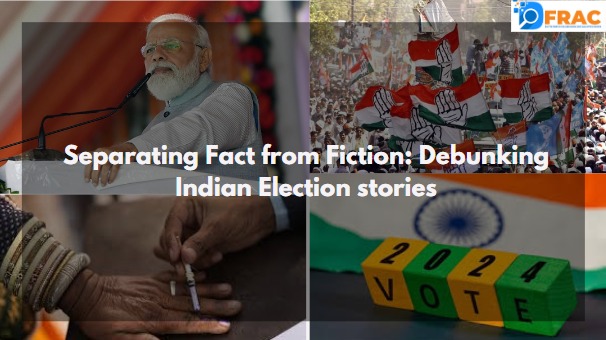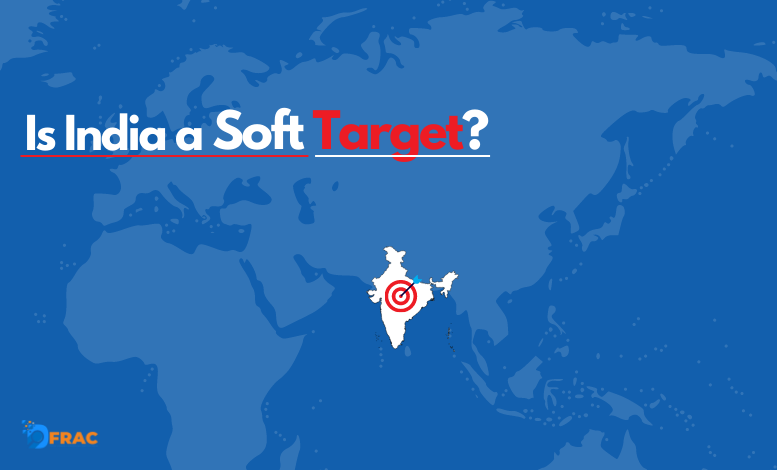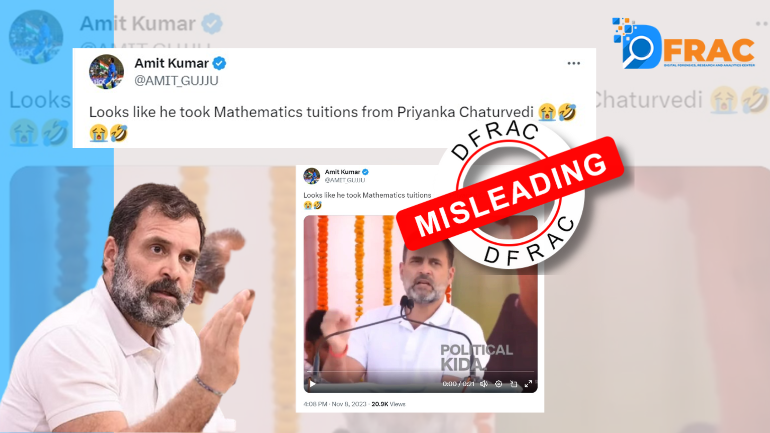“There’s a moment where you choose whether to be silent or to stand up, and somewhere inside all of us is the power to change the world.” – For a fresh approach, exercise your power to choose and to speak. Express yourself to be heard by casting your vote.
The world’s largest democracy, India, holds its breath every five years as the nation gears up for the mammoth exercise of general elections. Poll Body Says Over 64 Crore People voted In 2024 Lok Sabha Elections therefore Indian elections show country’s vibrant democratic spirit and the strong commitment of its citizens to exercise their fundamental right to vote. However, the 2024 elections were marred by a surge of misinformation, threatening to undermine the integrity of the electoral process.
In a digital age where information travels at lightning speed, the potential for misinformation to spread like wildfire is a cause for grave concern. Recognizing the severity of this issue, the DFRAC (Digital Forensics, Research and Analytics Center) team worked tirelessly and diligently to debunk the misinformation from spreading in Indian circles.
This report aims to highlight the importance of combating fake news, which can create confusion among users and influence voter’s decisions in ways that undermine the democratic process.
This report includes graphic representations to illustrate the false claims that were circulated widely on the internet alongside the facts debunked by DFRAC’s team. These visual aids will help one to understand the extent of the misinformation and how it distorts reality.’
1. EVM and Manifesto
Misinformation related to Electronic Voting Machines (EVMs) and political party manifestos create doubts about the integrity of the voting process and the promises made by candidates. False claims about EVM tampering or hacking leads to distrust in the election results, while misleading information about party manifestos can influence voters’ decisions based on inaccurate promises or commitments. The impact of such misinformation on Indian voters is significant, as it undermines trust in the electoral process and influences voting decisions based on false information.


2. Old videos and Photographs
The circulation of old or outdated videos and photographs, presented as current events, can mislead voters about the actions or statements of political leaders. This misinformation can unfairly sway public opinion by presenting a false narrative or taking events out of context. The impact on Indian voters is that they may form opinions or make decisions based on inaccurate or misleading information, which can ultimately affect the outcome of the elections.





3. Fake Published Articles, News and Videos
Fake news in India distorts facts and fuels societal divisions. Targeting diverse populations, it amplifies tensions and sways electoral outcomes. Below are the infographics of fake news published during 2024 election to mislead voters.


4. Edited and Cropped Videos
Manipulated videos, such as those that are cropped or edited to change the context or meaning of a political leader’s speech or actions, can create a false impression of their character, intentions, or policies. This misinformation can unfairly damage a candidate’s reputation or mislead voters about their true stance on important issues. The impact on Indian voters is that they may be swayed by false narratives or manipulated content, leading to a misinformed electorate and potentially influencing the election results.





5. Statistical Misinformation
The spread of false or misleading statistics related to voter turnout, polling results, or the election commission’s activities can create confusion and doubt among voters. This misinformation can lead to a lack of trust in the electoral process and the institutions responsible for conducting free and fair elections. The impact on Indian voters is that they may lose confidence in the democratic process and feel discouraged from participating in future elections.

6. Election Commission
False information about the Election Commission can confuse voters, making them doubt the fairness of elections and lose interest. This hurts democracy by making people distrust the voting process and results.

Conclusion
While misinformation has been prevalent and concerning in past (2019) and present elections, the rise of misinformation has been significantly amplified due to increase in technology, leading to an increased in confusion among voters. DFRAC’s team put countless efforts to fight against the tide of misinformation and fabricated stories throughout election cycle by providing fact checks and debunking fake news. As Individuals we should verify the accuracy of information before sharing contributing to a more informed society.





